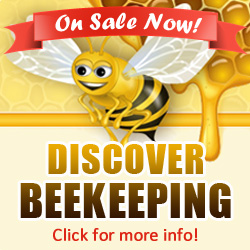PENSACOLA, Fla. (January 24, 2011) – Last week representatives from the U.S. Environmental Protection Agency (EPA) and the pesticide industry met with university researchers, conservationists and beekeeping groups in Florida to discuss the way that pesticide risks to bees are evaluated. The conference, which was organized by the Society for Environmental Toxicology and Chemistry (SETAC), is considered by U.S. government agencies and industry-watchers to be the first step in evaluating whether current guidelines on measuring pesticide toxicity are effective.
Currently, the EPA only evaluates pesticide toxicity to honey bees, while bumble bees and other crop-pollinating bee species are given no consideration. Beekeeping groups have also questioned the validity of the existing honey bee hazard evaluation process in the U.S., and have pushed the agency to develop stricter standards in the wake of highly publicized bee deaths. Previous SETAC conferences have reviewed the pesticide risk standards to wildlife such as fish and birds, resulting in more stringent requirements on the part of manufacturers. This was the first SETAC conference focused specifically on bees.
“We are generally pleased with the increased intensity of pesticide screening that was discussed, as well as the inclusion of non-honey bee species in the testing process,” said Mace Vaughan, Pollinator Program Director at the Xerces Society for Invertebrate Conservation, who attended the conference. “We hope that this will lead the EPA to adopt more thorough risk management strategies for pollinators.”
Pollinators have been the focus of several conservation initiatives spearheaded by the Xerces Society and beekeeping groups in recent years, who point out that the ecological service bees, butterflies and other pollinators provide is necessary for the reproduction of more than 70 percent of the world’s plants. This includes two-thirds of the world’s crop species, whose fruits and seeds together provide over thirty percent of the foods that we consume. Dramatic declines of both wild and domesticated bees have resulted in a growing awareness of threats such as habitat loss, diseases and pesticide use.
“It is vitally important that the EPA better address the impact that these toxic substances have on honey bees and native bees,” said Zac Browning of the American Beekeeping Federation, who also attended the conference. “Adoption of the final recommendations from this workshop, which are expected in the next several months, is a good first step. But much more will need to be done to truly protect these important pollinators.”
In the U.S. alone, more than 1.2 billion pounds of pesticides are applied annually. Penn State researchers have identified traces of more than eighty different pesticide products in nearly all honey bee hives they examine, with several of these compounds being implicated in bee deaths.
The Xerces Society and the American Beekeeping Federation recommend that the EPA:
- Adopt a strong risk assessment strategy for both honey bees and native bees based on the information developed at the conference.
- Conduct a robust review of neonicitinoid pesticides, which have been implicated in bee deaths.
- Develop better labeling so that consumers can easily determine which pesticides are most toxic to bees and understand how to use the pesticides while limiting risk to pollinators.
ABOUT THE XERCES SOCIETY
The Xerces Society is a nonprofit organization that protects wildlife through the conservation of invertebrates and their habitat. Established in 1971, the Society is at the forefront of invertebrate protection worldwide, harnessing the knowledge of scientists and the enthusiasm of citizens to implement conservation programs. To learn more about our work or to donate to the Society, please visit www.xerces.org.
This “CATCH THE BUZZ” article brought to you by Bee Culture, The Magazine Of American Beekeeping, published by the A.I. Root Company.






Speak Your Mind